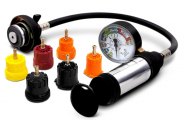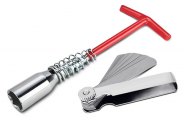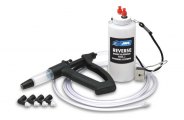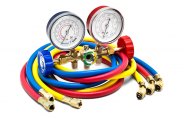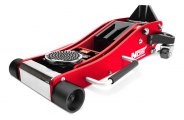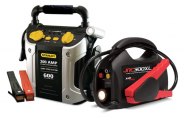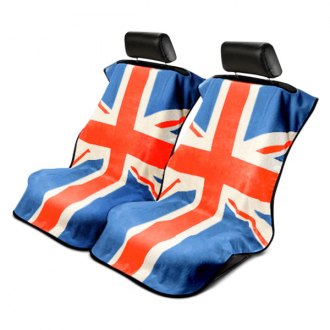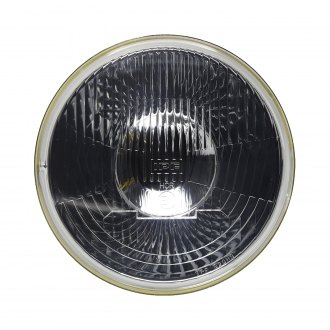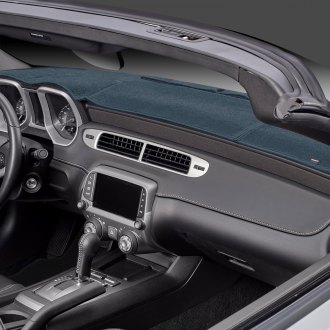Studebaker Accessories & Parts

Studebaker Parts
Studebaker Wheels & Tires
Studebaker Exterior Accessories
Studebaker Automotive Lighting
Studebaker Body Parts
Studebaker Interior Accessories
Studebaker Audio & Electronics
 Stereos
Stereos Speakers
Speakers Installation Parts
Installation Parts Amplifiers
Amplifiers Subwoofers
Subwoofers Cameras & Driver Safety
Cameras & Driver Safety Alarms & Remote Start
Alarms & Remote Start CB Radios & Components
CB Radios & Components Antennas & Components
Antennas & Components iPhone & Android Integration
iPhone & Android Integration Bluetooth
Bluetooth Equalizers & Processors
Equalizers & Processors Batteries & Power
Batteries & Power Video
Video Radar Detectors
Radar Detectors GPS Systems
GPS Systems Mounts & Chargers
Mounts & Chargers Action Cameras & Accessories
Action Cameras & Accessories
Studebaker Automotive Tools
 Oil Change Tools
Oil Change Tools Engine Service Tools
Engine Service Tools Suspension & Steering Service Tools
Suspension & Steering Service Tools Pullers & Installers
Pullers & Installers Cooling System Service Tools
Cooling System Service Tools Automotive Lifts & Stands
Automotive Lifts & Stands Repair Manuals
Repair Manuals Spark Plug & Ignition Tools
Spark Plug & Ignition Tools Wheel & Tire Service Tools
Wheel & Tire Service Tools Brake Service Tools
Brake Service Tools Fuel System Service
Fuel System Service Transmission & Drivetrain Service Tools
Transmission & Drivetrain Service Tools A/C Tools & Equipment
A/C Tools & Equipment Electrical System Tools
Electrical System Tools Diagnostic & Testing Tools
Diagnostic & Testing Tools Exhaust System Service Tools
Exhaust System Service Tools Auto Glass Tools
Auto Glass Tools Lockout Kits
Lockout Kits Jacks
Jacks Automotive Paint
Automotive Paint EV Charging
EV Charging Battery Chargers & Jump Starters
Battery Chargers & Jump Starters Dollies & Movers
Dollies & Movers Creepers
Creepers Auto Detailing
Auto Detailing Key Cutting Machines
Key Cutting Machines Dent Repair Tools
Dent Repair Tools Service Carts
Service Carts Vehicle & Parts Protection
Vehicle & Parts Protection
Like so many early automakers, Studebaker’s roots were in metal smithing and wagon building. The Studebaker family began making wagons in Pennsylvania in the 18th century, and the company that would eventually build automobiles was founded in 1852 when brothers Henry and Clement Studebaker opened the H & C Studebaker blacksmith shop in South Bend, Indiana. Some claim this makes Studebaker the world’s oldest car company. Initially just making metal parts for wagons, the brothers soon began manufacturing complete wagons, becoming a wagon supplier to the Union Army during the Civil War. Younger brothers John, Peter, and Jacob later joined the firm and the enterprise was renamed Studebaker Brothers Manufacturing Company in 1868. By the end of the 19th century, Studebaker was the largest wagon manufacturer in the world, building a wide range of wagons, carriages and buggies in a huge, nearly 100 acre manufacturing plant. The beer wagons pulled by the famous Budweiser Clydesdales were built by Studebaker around 1900.
In the 1890s “horseless carriages” from builders like Duryea, Winton, and Olds began appearing on American roads and Studebaker decided to develop its own motor vehicle. The first Studebaker automobile was an electric car that was built from 1902 to 1911, but in 1904 it also began building a gas powered car with engines supplied by the Garford Company of Elyria, Ohio. Unfortunately Garford did not abide by the terms of the companies’ agreement, and Garford engine models ceased production in 1911. In 1908, Studebaker began an association with the EMF Company of Detroit where Studebaker would supply bodies to EMF to be used in the manufacture of vehicles that would be distributed by Studebaker. Unfortunately, the EMF cars had quality and reliability problems. Studebaker purchased EMF and its manufacturing plants and after taking over, at great expense, remedied the defects of every EMF car to the customers’ satisfaction. This experience inspired Studebaker to make sure that only the most rugged and durable cars bore its name.
In 1911 the Studebaker Brothers Manufacturing Company was renamed the Studebaker Corporation. During this decade the company benefited financially from huge orders for wagons and other materials from the British, French, and Russian governments for use in the First World War. Studebaker was dedicated to building powerful 6-cylinder engines, and in 1913 pioneered the monobloc engine casting technique, where major engine components like the crankcase, cylinders, and cylinder head are cast together instead of as separate parts requiring assembly. Studebaker automobile production had been concentrated in Detroit, but in 1920 production of horse-drawn vehicles ended and during the following decade automobile manufacturing was gradually moved to South Bend. During the 1920s Studebaker began building a line of trucks, including buses and fire engines, and in 1926 the company became the first automaker to have its own outdoor proving ground. In 1928 Studebaker built its first 8-cylinder engine, installed in the top of the line President model, and later that year 6-cylinder Studebaker Commanders broke speed records that had been set by the higher priced 8-cylinder Auburn Speedster.
The economic depression of the 1930s decimated the auto industry, and many well-known automakers of the day went out of business including Pierce-Arrow, Cord, Hupmobile, and Locomobile. Studebaker went into receivership in 1933, but after refinancing and reorganization the company became solvent again in 1935. Sales continued to be weak but the company’s fortunes would change for the better when they retained renowned design studio Raymond Loewy Associates. Loewy and his chief designer Virgil Exner created the 1939 Champion, which was a huge sales success thanks to its styling, light weight, durability and fuel economy. During WWII Studebaker manufactured trucks for the U.S. military, including the tracked amphibious cargo and personnel carrier M29 Weasel. After the war, when other automakers were still selling rehashed pre-war models, Studebaker was the first to offer an all new design with the 1947 Starlight coupe, a Loewy/Exner creation that featured distinctive proportions highlighted by a longer than usual trunk lid and wraparound rear window.
Studebaker continued its styling leadership with the “bullet nosed” 1950 models, and both the Champion and Commander models were radically redesigned for 1953 by Robert Bourke of the Loewy studio. The hardtop coupe Starliners and fixed pillar Starlight coupes had sleek, timeless styling that was quite advanced for the day. However, as an independent Studebaker found it hard to compete with the Big 3 – GM, Ford, and Chrysler. Because of their size these companies enjoyed large economies of scale that enabled them to offer discounted prices that Studebaker couldn’t match. In an attempt to remain competitive, Studebaker merged with Packard in 1954 to form Studebaker-Packard Corporation (S-P).
The most important models from S-Ps brief existence were the Hawk series and the Lark. The Hawk, produced from 1956-1964, was an evolution of Robert Bourke’s 1953 Champion/Commander Starliner hardtop coupe design. The 1956 Golden Hawk, powered by Packard’s 352 c.i. 275 hp V8, had a favorable power-to-weight ratio that gave the car performance that was on-par with the Ford Thunderbird, Chevrolet Corvette, and Chrysler 300. When the Packard engine was discontinued the following year, the Golden Hawk was equipped with a supercharged Studebaker 289 c.i. V8 that had the same horsepower rating. The Lark was a compact car that debuted in 1959 and sold well initially until the Big 3 introduced their own compacts. It became Studebaker’s main product after 1958 and later versions were renamed Commander, Challenger, Cruiser, and Daytona.
The Packard line had been discontinued in 1958, but it wasn’t until 1962 that the name was dropped and the company again became the Studebaker Corporation. The last new Studebaker model was the Avanti, a striking Loewy studio designed 4-passenger personal luxury coupe. Powered by a 289 c.i. V8 engine that could be equipped with a Paxton supercharger, and sporting a radically styled fiberglass body, the Avanti was equipped with features like a built-in roll bar and front disc brakes. However, the Lark and Avanti were not enough to save Studebaker, and the company’s South Bend manufacturing plant closed in December 1963. Commander, Cruiser, and Daytona production continued at Studebaker’s Hamilton, Ontario plant until 1966. The Avanti name and tooling were sold to two Studebaker dealers, and replicas of the car were built as late as 2006.
Today many Studebaker models including the Avanti, Golden Hawk, Champion, and Starliner & Starlight Coupes are prized by enthusiasts and collectors and you can regularly find Studebakers at classic car events. The Studebaker museum has an extensive collection of vehicles, artifacts, and memorabilia that celebrate the company’s history, and owners and enthusiasts can participate in clubs, conventions, and Internet forms where they can seek advice and share information. We want to be a resource as well, and we stand ready to help with a large selection of maintenance, repair, and appearance preservation products to enrich your Studebaker owning and driving experience.
Dress your vehicle up. Keep it running at its peak or unleash its hidden power. Make it look like it just rolled off the show room floor. Take care of it and maintain it. You name it, we've got it. We have gathered everything you need to make your Studebaker perfect both inside and out. CARiD's job is to meet your every expectation and provide you with quality and durable accessories and parts designed with excellence in mind. Whether you're after luxurious style, brisk performance, or anything in between, our wide assortment covers all the bases.
Featured Products
Popular Products
-

-
 $54.67 - $265.23
$54.67 - $265.23 -



